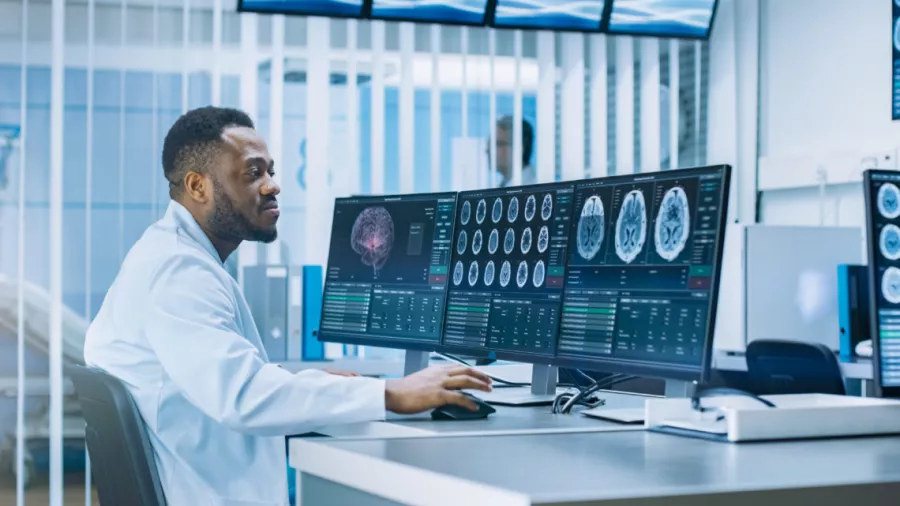RSNA: 3D printing and the value-add opportunity for radiology
In the lead up to RSNA, we've been evaluating the benefits of advancing the relationship between radiology and 3D printing.
Radiology is faced with an exciting opportunity to take traditional medical imaging to the next level, improving surgical and patient outcomes. And, Axial3D is ready to address the underlying question of how to make this possible, without overburdening your team.
Whether you're just getting started with 3D printing, or want to increase output, Axial3D can help. Our team is looking forward to meeting the radiology community at RSNA and understanding your priorities.
“If radiology can somehow position itself as the provider of medical 3D printing service line, that would be quite a coup for the field. After all, nobody envisions a future in which there is less 3D printing rather than more.” - Nadim Michel Daher, Industry Principal, Medical Imaging and Imaging Informatics, Frost & Sullivan
Faced with declining reimbursement rates for medical imaging procedures, alongside increasing risk of commoditization of imaging services, 3D printing embodies a value-add opportunity for radiology that comes with the potential for service-line growth.
What if the radiology service incorporates not just image interpretation, analysis, and treatment proposals, but also customized patient-specific models for surgical planning, patient consenting and surgical simulation?
3D Printing for Radiology at RSNA
Just as X-ray, CT and MRI imaging became standard in healthcare, 3D printing is fast becoming the next evolution in medical imaging. And, radiologists are uniquely positioned to take advantage of this, with their role in image acquisition right through to producing 3D models from those images.
3D printing gives radiologists access to the latest tools and state-of-the-art technology needed to enhance their roles, provide better experiences and communication for patients, and to give surgeons increased insights into pathologies which traditional imaging would not provide.
Right now, medical 3D printing is the fastest-growing of all 3D printing across any industry. This is driven by healthcare professionals who continue to realize the value of 3D printing in areas such as surgery planning, education, and training - and the direct positive impact this has for the patient experience.
Even when using the most sophisticated MRI and other imaging modalities, you can find:
- Inadequate insight into patient anatomy
- Longer than necessary surgery durations
- Poor communication within the surgical team
- Difficulty setting patient expectations
Our approach to 3D printing addresses these challenges and is based on experience in supporting some of the largest healthcare networks to implement and integrate 3D printing within their patient care pathway.
Expert Medical Segmentation and 3D Printing at RSNA
Axial3D has developed solutions that compliment your existing medical imaging workflow, whether you currently have access to 3D printing or not.
Our team of engineers are experts in the conversion of DICOM to 3D printable file and 3D printing of medical planning models for any medical specialty.
Next Steps
We’re ready to answer any questions you have about getting started with medical 3D printing.
For more information, get in touch at contact@axial3D.com or call Axial3D on +1 857 412 7244. You can also try a free model by clicking the button below!
Why not try our segmentation-as-a-service completely free of charge.
Request a free visual




